Skagen
Visiting Aalborg was not our only objective in the North of the Jutland peninsula. Next morning, we boarded the car again, crossed the bridge to Norresundby and drove to the most beautiful natural sights in Danemark, those around its northernmost tip, in Skagen
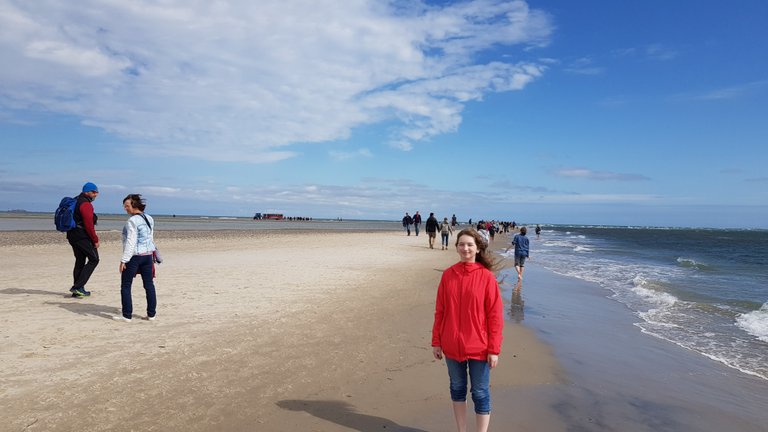
My pictures are not going to do it justice, so you'll have to plan a visit for yourself. This is the point where two seas meet and, may I say, collide: one the left, the North sea. On the right, the Baltic Sea. The waves of the former come from the West and smash against the waves of the latter, coming from the East. Sand is pushed up between the two and creates a long underwater corridor where one can walk with a foot in cold water (North Sea) and a foot in warm water (Baltic Sea). The currents can be quite strong though, so this is of course not advised (but most tourists do it nonetheless).

The maritime straits separating Danemark from Sweden to the North are called "Skagerrak", a name which will resonate with those who have played one of the oldest (1958) and most fascinating table-top games, Diplomacy.
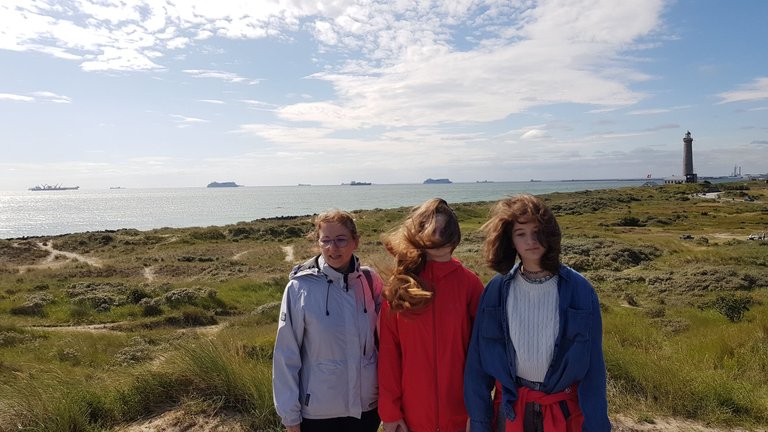
The lighthouse in the background, on the Baltic Sea shore (but visible on both seas) played a prominent role during the Napoleonic wars. Hearing that Danemark was about to join Napoleon, the British ordered Admiral Nelson to sail North and attack Copenhagen. The waters of the Skagerrak strait are treacherous though and the locals knew it, so they ... switched the lighthouse off! Several British ships ran ashore but in the end the Royal Navy used one of their own ships as an "ad-hoc" lighthouse and managed to pass.
Of course you should expect strong wind practically all year long.
We walked back from the promontory barefoot through the sand alongside the North Sea coast. There is a big tractor, whose tracks you can see in the sand, which ferries tourists not inclined to walk to and from the tip of the promonotory,

Rabjerg Mile
Next to Skagen (about 4 km) you can find a unique geographic phenomenon, a moving sand dune. The Rabjerg Mile is the largest of its kind in Europe and is absolutely fabulous to experience.
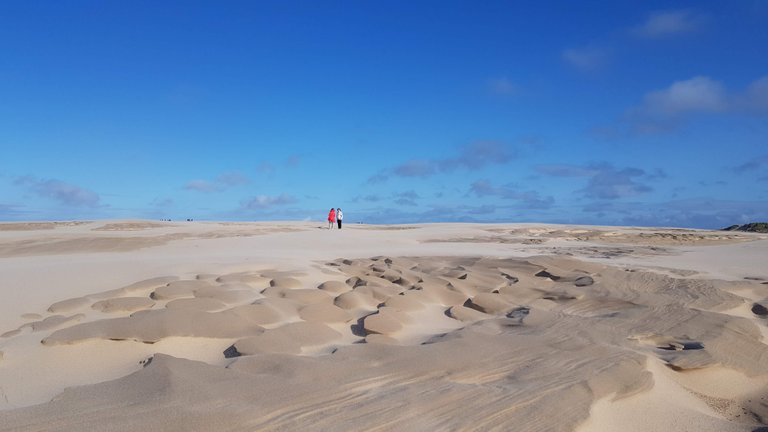
One would think the above picture was shot somewhere in the Sahara or the Arabian desert if not for the blue-ish hue of the picture which betrays the northern latitude and of course the clothing of the persons (wind jackets).
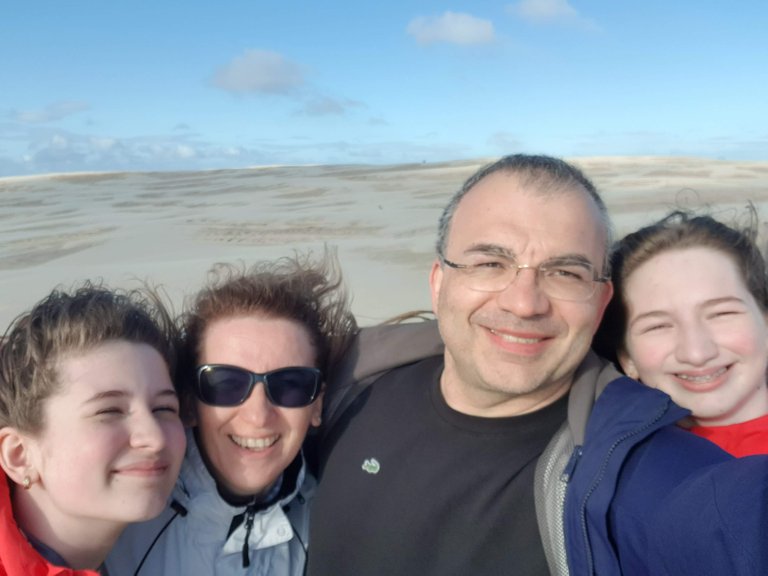
Here the wind is very strong, continuous and always blowing from West (North Sea Coast) to East (Baltic Sea coast). This migrating dune was formed more than 300 years ago on the North Sea shore and in another 200 years or so it would have crossed the peninsula and would have reached the Baltic Sea!
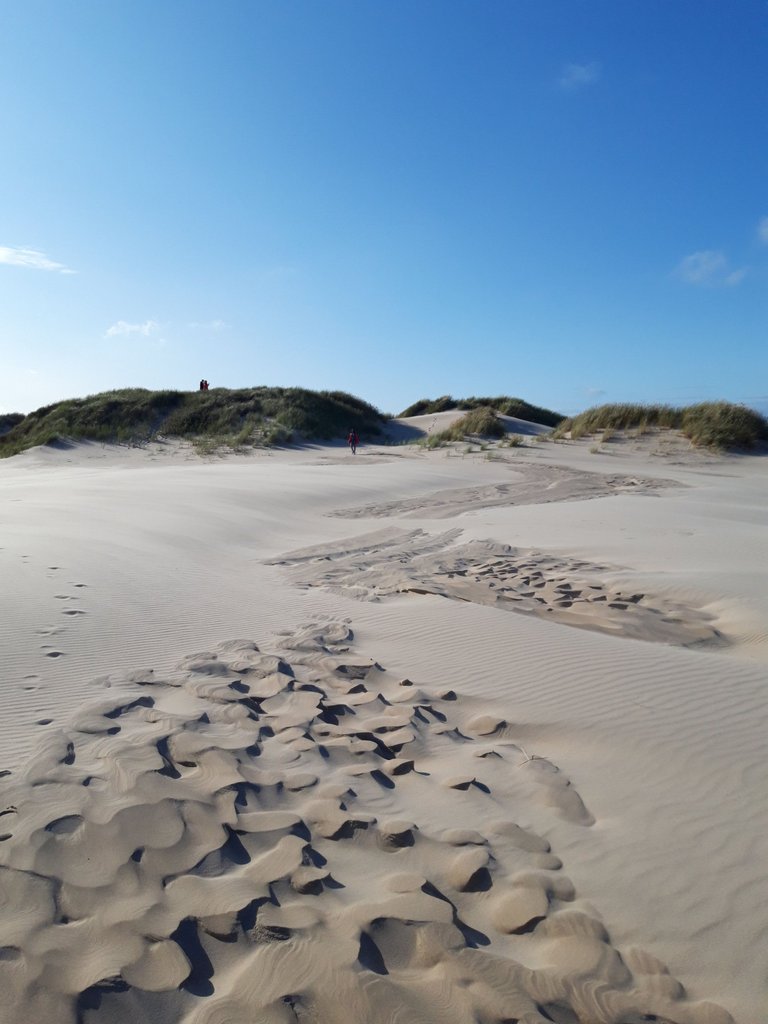
Unlike the African or Arabic deserts, here the sand is rather coarse grained and heavy with moisture. Therefore, it's not blown very high by the wind but stays rather close to the ground. This makes the experience quite comfortable as one doesn't have sand getting into the eyes, the nostrils or the mouth! It's really more like a sandbox which invites you to play!
If you get here, be sure not to miss the experience!
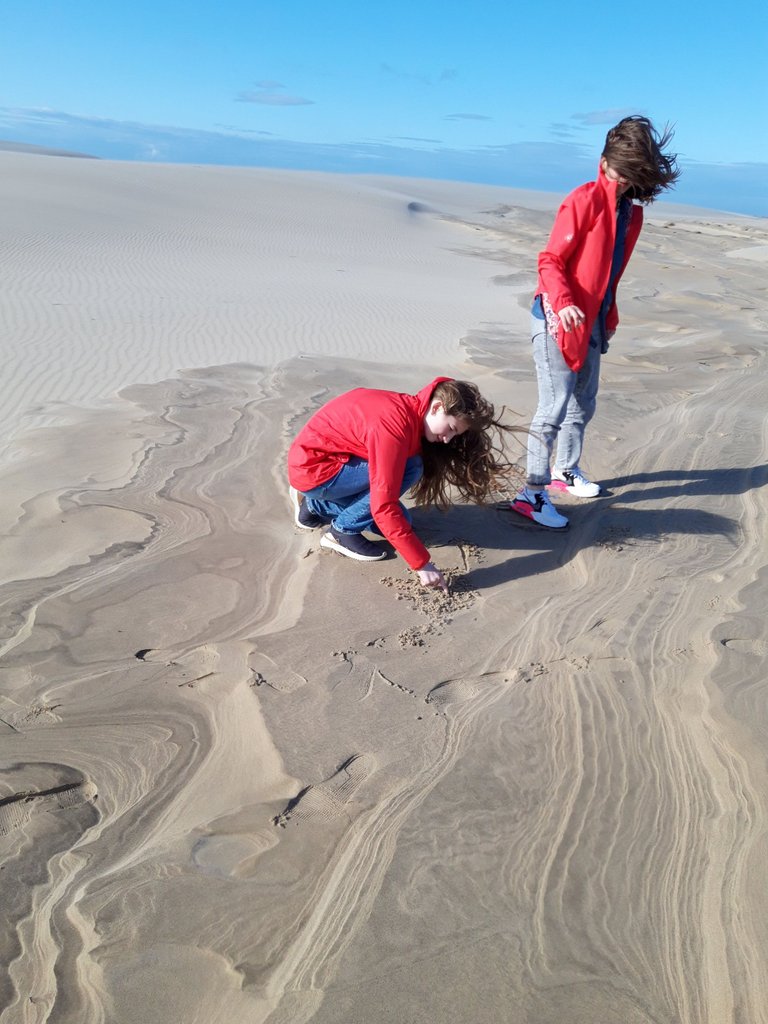
Hirsthals Oceanarium
The third attraction we visited during that day was the "Oceanarium" (Aquarium) in Hirsthals, about 40 km away to the west. I wasn't convinced the effort would be worth it as we had visited several beautiful aquariums in the previous years including the one in San Francisco and I thought there wouldn't be much to note in this one. Therefore I didn't bother to take pictures so I only have a couple taken by my wife.
In the end, although in terms of species the variety wasn't extensive, there were a few notable things: unlike many aquariums which host sea lions (more amenable to train for shows), this one hosts the local pinnipedes, the North sea seals (smaller "harbour seals" and larger "grey seals").
Seals are cute but when protected they multiply easily and begin seriously competing with the fishing industry! I didn' realize but the roughly 30 000 seal population, which the Danes track, eats in a year a quantity of fish equivalent to 40% of the total catch of the Danish fishing industry!
To show visitors the life of a fisherman could be, the Oceanarium had a "fishing boat simulator" where one could experience what's like on a fishing boat during mild winds, strong winds and during a storm! I can tell you, I'm not ready to embrace a fisherman's career!
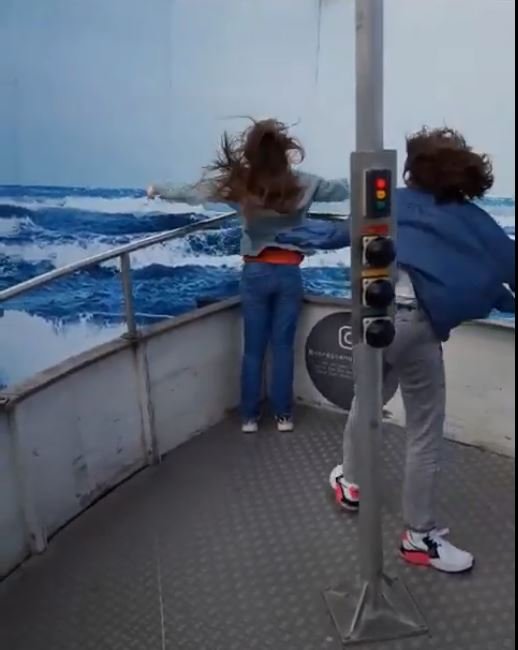
Yep, they tried to play the "Titanic" scene there ...
Thing is, fishing is a traditional, historical occupation in Danemark, part of the national identity, and the fishermen vote!
So do hunters (many Danes are also registered hobby-hunters) which would love to be able to help contain the seal population. Opposed to them and defending the seals are the "tree huggers" ... which leads to a hotly debated political issue in Danish politics!
To complete the description of the Oceanarium, another thing which make it original is the number of games the children can play. If you happen to be in the area with children, you'll score a hit with a visit here!
To the South!
We returned to Aalborg in the evening, slept another night there (in the same hotel, the young Danish revellers were not very noisy and/or the phonic isolation was decent) and the next morning we "set sail" (metaphorically) to the South, to Aarhus, Danemark's second most populous city.
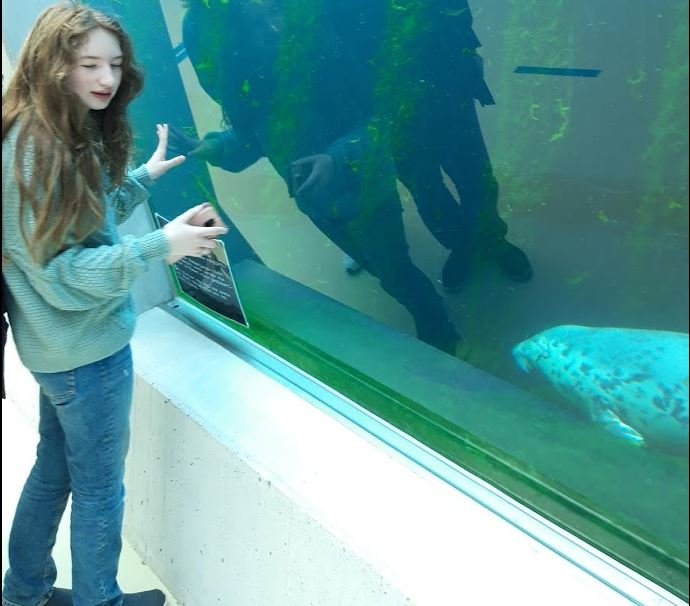
Congratulations, your post has been added to Pinmapple! 🎉🥳🍍
Did you know you have your own profile map?
And every post has their own map too!
Want to have your post on the map too?
@tipu curate :)
Upvoted 👌 (Mana: 11/71) Liquid rewards.
Hi rozku, and thanks!
💙